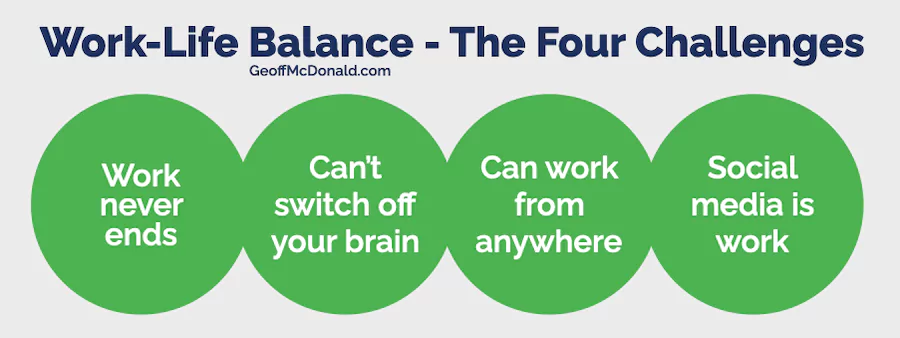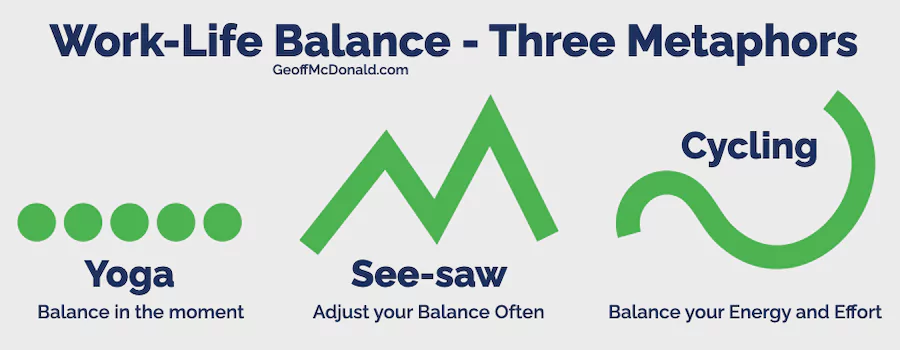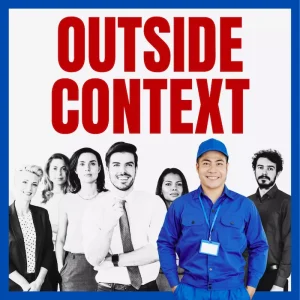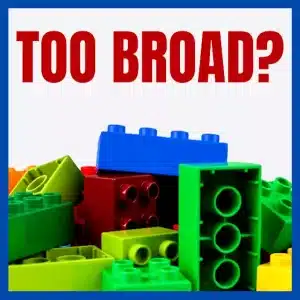We all want work-life balance. We all want less stress and more happiness. We all want to enjoy our lives, enjoy our work and be well. But how do we get that?
Is Work-Life Balance important?
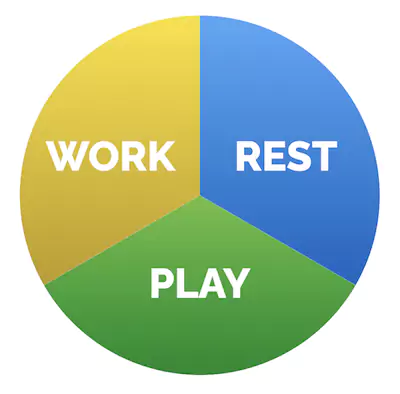
If you were alive and working in Britain during the 18th century it’s likely you were working 10 to 16 hours a day in a noisy, dangerous factory. If you were a child, you were probably working too.
In the UK, this started to change in the mid-1800s when the short-time movement or the eight-hour day movement, led by Robert Owen made an impact. The goal was to have eight hours of work, eight hours of recreation and eight hours of rest.
(Owen wasn’t the first though. Philip II of Spain start a similar campaign in 1593.)
In Australia, workers started gaining an eight-hour day in the 1850s but it didn’t become law until the early 1900s.
Nowadays in Australia when we have a public holiday for Labour Day, it’s a celebration of the eight-hour working day. To commemorate this, you might see the numbers ‘888’ added to an old trades hall – like this one in Fremantle.

Why the Eight-Hour Day is not the whole story
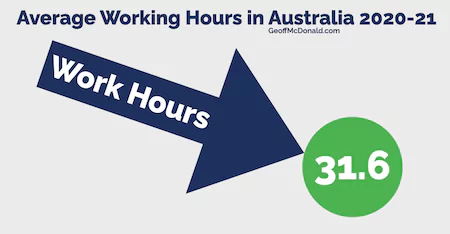
Now, that was one hundred years ago. And you’d think that now we have more money, bigger houses, faster cars, healthier food etc we’d be better off, right?
Wrong.
Contrary to popular opinion, the key to work-life balance is not about longer working hours.
By most stats, working hours in OECD countries have been falling since the 1990s. In Australia, the average working week across all workers is now 31.6 hours per week. That’s an average – which means some people are doing more hours and some are doing less.
The Right Question
Given we are typically working less, what went wrong? Why are we more stressed by our work than ever before?
I think my Mum has the right question… Every year that I’d go down to visit my Mum for Christmas, she would ask me, “Did you get all of your work done?”
My answer is always, “I never get all of my work done. There is always more to do.” I could be reading more books, writing more posts, talking to more people, making more videos..
Knowledge Work
This is the nature of knowledge work: Knowledge work never finishes.
Have you ever finished all of your emails? I know I haven’t.
Further, when you’ve finished doing factory work, you can just switch off the machine and go home. But when you do knowledge work, you can’t just switch off the machine, because that machine is your brain.
Digital Technology and Work From Anywhere
Plus, there is another problem. And it’s likely there right in front of you staring at you as you read this. That’s right, I’m talking about your smartphone and your laptop. There are two issues here:
- The first is that we can now work from anywhere.
- And this is creating a bigger problem – given our work never ends, we can’t switch off our brain and we can work from anywhere, what do you think happens? It feels like we’re always working. The ideal of the eight hour day of work, rest and play have morphed into an open all hours policy.
But, wait, it gets even worse.
What your brain thinks about Social Media
When we stop doing work, we click over to social media for some light entertainment.
But the problem with this is that while we think we’ve finished work, our brains are saying ‘OMG – now I get to sit at this damn screen for longer clicking on things and reading things just like work’.
In other words, our brains see social media as more work. When we think we’re switching off, we’re not.
We’re no longer doing eight hours of work, eight hours of rest and eight hours of play, we’re now open 24 hours. In other words, we’re always on.
What’s the solution to Work-Life Balance?
I think the real issue here is that people have the wrong impression of what balance means. Let me ask you, what is balance?
How you define balance will determine whether you think you have work-life balance or not.
Balance using Scales
Most people think of balance as a set of scales. You put one thing on one side and you even up the weights on the other.
But if you try to have work-life balance in this way you will fail. You will be constantly chasing a mirage. While scales is not a great metaphor for balance, the good news is that there are three other types of balance that do work.
Three Ways to Achieve Work-Life Balance
1 Yoga Pose

Yoga done well is a beautiful thing to watch and even better to practice. It’s strong, elegant and majestic. The goal here is to practice and perfect the form. The principle is static balance. You are trying to get things in perfect alignment – and holding it there.
And I’ll be honest with you, for people that work from home, or people that have their own business that they’re doing on the side, there’s got to be there’s almost a gray area in between, and you just have to have the flexibility. And don’t be too strict on yourself, you know, because we don’t live in a perfect world.
Gavin Sequeira, Break Free From Corporate
Balance in the Moment
The goal is not to live a perfect day. Instead, it’s to focus on a single moment and be in balance in that moment. You can stop at any time – including right now and take a breath. Here’s how:
- Simply sit with a tall posture.
- Close your eyes if you want to.
- Take a deep breath in.
- Slowly release your breath through a slightly open mouth.
- Celebrate to reinforce the habit. This might be to smile or speak an encouraging phrase or word (eg calm, well done, balance)
This is how you can have work-life balance at any time. You can do that throughout your day to centre and ground yourself to stay in balance or put yourself back in balance.
2 See-Saw Balance
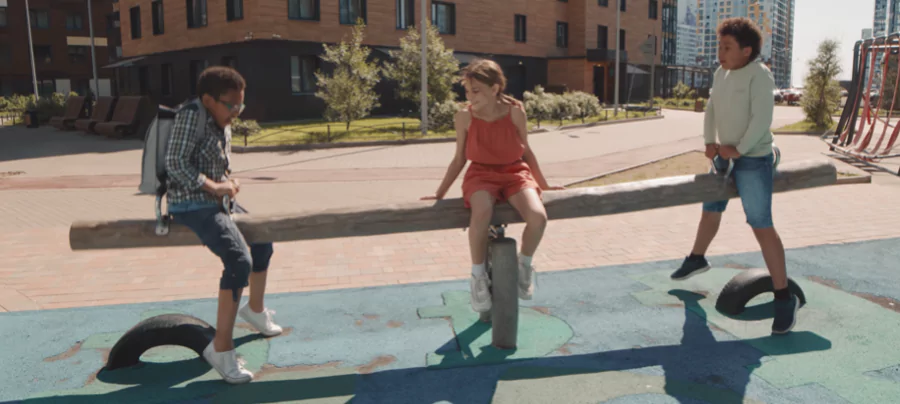
I often have issues with that term, you know, because work-life balance sounded very strict. Like you have to have a work and a life two very black and white components.
Gavin Sequeira, Break Free From Corporate
When we look at the world as a set of scales, we’re trying to have black and white balance.
While a seesaw might look like a gigantic set of scales, the way we play with it is very different. When you use a scale, you’re looking for equals – for static balance. But when we’re on a seesaw there is movement, interaction and adjustment.
Most of the time in our work-life balance we are off-balance. The seesaw metaphor acknowledges this and says, ‘I’m off balance and I need to adjust a little to get back into balance.’ And this is the constant adjustment we are always making to our changing environment and our changing situation. ‘Oh, I’m off balance again, I’d better add another tweak.’
Plus, the seesaw metaphor also acknowledges that there is something that it knocking us out of balance.
Three things knocking us off balance
- Internal thoughts – It might be ourselves and the way we are thinking about a situation eg I should be getting more done or I need to keep pushing hard.
- Someone Else – It might be thoughts about someone else and what we have promised to do for them eg your client is waiting for the report or your kids are waiting for dinner.
- A Thing – Or it may be your thoughts about a thing eg my internet bandwidth is slow today or I need to get the car fixed.
Using the Seesaw for Balance
When we identify the specific thing that is knocking us off balance we can choose how we respond to it. Use the seesaw metaphor throughout your day to keep making tweaks to your balance.
- When you notice you are hurried, harried or off-balance, stop.
- Ask yourself: What’s knocking me off balance? Which of the three thoughts: something internal, about someone else or is it a thing?
- Then explore how you want to respond. Ask yourself: What can I adjust to get back on balance?
Remember that a seesaw is found in a playground and to play like a child on your work-life balance seesaw might be the best tip of all.
So I think the biggest thing out of what we’ve been talking about, as far as this work life balance thing goes is be authentic to you. Like, don’t worry about what other people are doing. Don’t compare yourself to anyone else.
If it works for you, great. If it’s not you be yourself, you know. So just try to be authentic. And put a schedule that works for yourself. If it’s not working, see where you can make little tweaks, and just constantly refine and be open to change.
Gavin Sequeira, Break Free From Corporate
3 Cycling as Balance
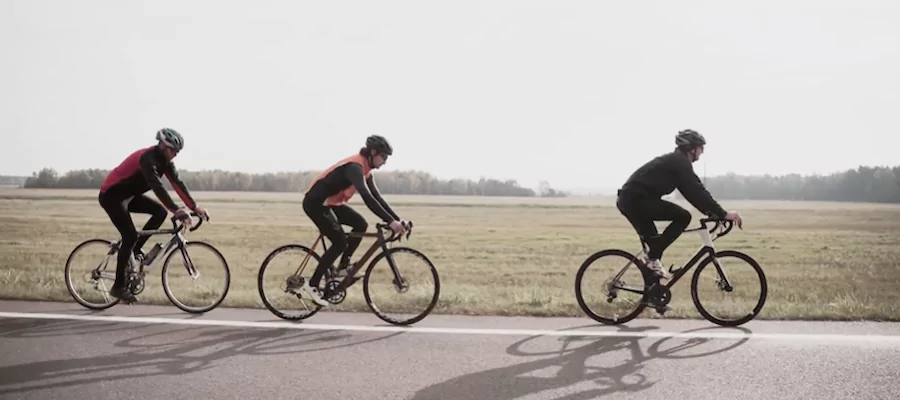
Do you remember what it was like to learn to ride a bicycle? (I do and I have the scars on my elbows and knees to prove it.)
Riding a bicycle is our third metaphor for work-life balance. It’s all about staying in balance as we go from one place to another.
- Yoga is about perfect balance in one spot in one moment of time.
- A seesaw goes up and down on the spot. It’s about adjusting in two dimensions.
- But riding a bicycle is four-dimensional. We can ride through three-dimensional space, and we can vary our speed and the duration of our ride.
We can ride fast, ride slow, go up hills, down the hills, around corners and in straight lines. Most importantly, we can ride for minutes or hours. And we can ride alone or with others. Riding a bicycle is work-life balance as a journey.
The trick about riding a bicycle is to manage your energy and effort levels.
When you travel in a car there is no physical effort required. But when we ride a bicycle…
- If we ride too fast for too long we become tired.
- Riding too slow and we risk falling off.
- When we ride into the wind it will take more effort.
- We can share the effort of cutting through the wind by riding in a group.
- If we ride on gravel it may be slippery.
- Plus, we can stop at any time and have a rest.
This is a great metaphor for work-life balance for your career. It’s all about riding at the right speed, with the right people, in the right way for the terrain you’re on and the destination you’re seeking.
Using the Cycling Metaphor for Balance
When you’re looking for longer-term balance in your work and life, consider the bicycle metaphor in your planning. These questions might help:
- Where do you want to go?
- What’s the terrain going to be like? Uphill, downhill, into the wind…
- What is the path going to be like? Slippery and wet, loose gravel or a firm paved road?
- Who are you going to ride with?
- Do you need to maintain or fix my bike or my tools to make it easier?
- How can you be in my best shape to ride up those hills?
- Where will you stop along the way for a rest?
- How hard will you ride? Gentle, racing or steady?
- How fast will you ride? Slow, fast or consistent?
- What’s the best way to manage your energy and effort for the journey ahead?
Where are you riding to today?
Summary: Work-Life Balance and the three metaphors
Let’s wrap up what we’ve covered here…
- Work-Life balance is not about working more or less.
- It’s about being able to switch on and off as you need to.
- It’s also about your definition of balance.
- Yoga balance is perfect for being in the moment. You can do this at any time throughout your day.
- Seesaw balance is perfect for adjusting your balance. Notice what is knocking you off balance and adjust.
- Cycling balance is perfect for taking a long journey – like your career. It requires you to pay attention to your energy and your effort.
Remember, work-life balance may be part of your journey but it’s not your destination.
Now get on your bike and start riding.
More on Work-Life Balance
If you’d like more on work-life balance and lifestyle design, here are some other pieces you might enjoy:
- Work Freedom and True Work-Life Balance
- Location Independent Lifestyle Design – 7 Principles
- 17 ways to work from anywhere in the world

